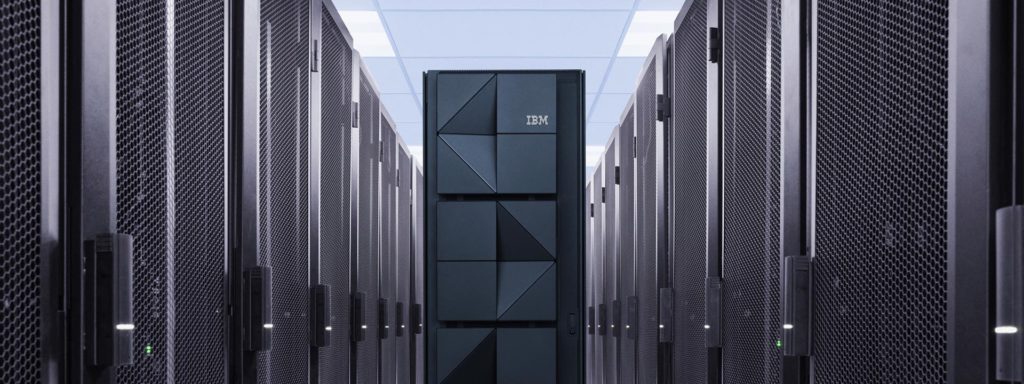IBM just released its financials which show it has significantly outperformed its peers. Given IBM’s age, this is amazing in and of itself. But what is even more amazing is that the star of the IBM show is a mainframe, the Z16, and it grew revenue a whopping 16% for one of the most expensive and arguably most secure, capable, and reliable platforms in the market. For those new to technology, back in the 1980s, everyone, including most at IBM, thought the mainframe was virtually dead. Yet here we are some 40 years later with a mainframe as IBM’s top-performing offering.
There are a couple of lessons and common mistakes here I’d like to chat about this week.
The three choices
When a new technology wave shows up, you generally have three choices: embrace it and abandon your competing technology and go all in an attempt to take the early leaders from behind; defend your technology and disparage the new stuff; or hedge and continue your existing path but invest in the new stuff.
All three approaches can be successful. We saw Microsoft pivot hard to the web when Netscape navigator showed up, and it ended up taking full control of the browser market while Netscape failed (though I could argue that was largely due to Netscape mismanagement). Steve Jobs was famous for disparaging technology he didn’t have, and Apple PCs still, decades after Windows laptops got touch screens, largely avoided that technology. In most cases, Jobs disparaged something until he could supply an alternative. As you may recall, he was against video on the iPod until the Video iPod came out, and was against tablets, calling them stupid, until Apple rolled out the iPad. Jobs took Choice Two from above but executed Choice Three, which, given the outcome, you could describe as best practice.
But Jobs never has done what IBM did in the 80s and accepts that new technology was better than what he had publicly, though I have no doubt he did so privately. He fully learned how to manipulate people, and he did so brilliantly.
IBM’s early mistake was to seemingly agree that mainframes were dead while working to hedge with PCs and Servers when it should have defended and advanced the mainframe back then while hedging, like Jobs did, with the newer technologies.
Market concepts can return
The concept of a mainframe, which is basically a proprietary server focused aggressively on I/O, security, and reliability, seemed ill-suited to the once-coming age of client/server computing, which requires performance at both ends of the system. However, centralizing technology has a few unique advantages: it’s easier to secure something you have full control over, most users don’t need the kind of performance dedicated servers provide, and when you are talking about a shared resource, I/O is critical, and that is where mainframes clearly are superior.
In another age, we might have called Amazon Web Service (AWS) a large mainframe given it is remote, you run your applications on it, not on your PC, and given how attractive a target it is, security is a critical part of the mix as opposed to what you might have in a typical on-premises data center.
The concept of a hosted Web service has effectively replaced much of our on-premises server solutions with services that are very similar in concept to what mainframe services used to be: a shared resource that could securely scale reliably as needed.
So, the market may come back around to where you are, and IBM’s Z16 success is just the most recent example of that. It is my belief that had IBM fought harder and advanced its mainframe more aggressively, it not only wouldn’t have declined in the 90s, it would have been far better positioned for the Internet world that was born that decade.
Wrapping up
Mainframes have always been awesome machines. There is a story of one of IBM’s smaller mainframe-like AS400s that had been left running in a room that had been sealed up during an office remodel that continued to function for at least a decade with no one even knowing about it, let alone able to service it. When it comes to I/O, reliability, security, and stability, there is no platform that can compete with a mainframe. Apparently, there are enough IT buyers that get this, making the IBM mainframe a growth platform.
So, while credit for IBM’s recent success belongs to IBM’s CEO, Board of Directors and rank and file employees and executives that do the heavy lifting, it is IBM’s foundational mainframe that really sets the bar in terms of sales performance now, and I think that is amazing.
- The HP OmniBook X Flip 2-in-1 16-Inch: Your New Digital Swiss Army Knife (Now in Glorious Atmospheric Blue) - June 25, 2025
- The Open AI Avalanche: Why AMD’s Collaborative Spirit Is Outmaneuvering NVIDIA’s Empire - June 22, 2025
- Lenovo Embraces OpenBMC: A Step Towards Greater Transparency and Control in the Data Center - June 17, 2025



